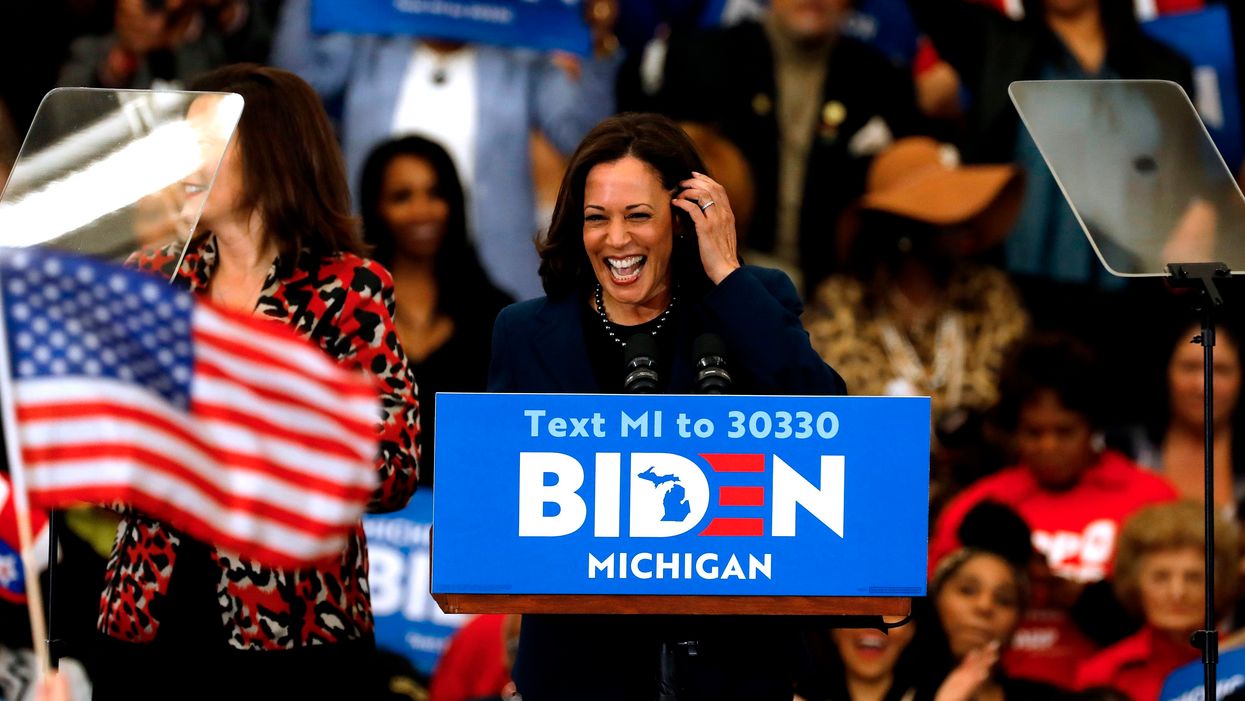Griffiths is the editor of Independent Voter News, where a version of this story first appeared.
Kamala Harris was high on Joe Biden's list of possible running mates from the start, for a range of reasons being exhaustively discussed now that he's chosen her. One poll receiving modest attention in all the talk reveals the California senator had the broadest support among Democratic voters — which could only have helped her cause.
The unusual aspect of the survey is that it was conducted two ways: the standard manner, where each person polled was asked to pick one candidate, and an alternate method allowing respondents to list their three favorites in order. Harris emerged as the plurality pick the first way. But she was the only candidate with majority backing once the top three choices were combined.
That marks a symbolically important victory for advocates of ranked-choice voting, who see this alternative election method as the key to minimizing polarized partisanship while maximizing the chances for candidates who are consensus-driven and outsiders, especially women and people of color.
FairVote, the nation's largest group promoting the switch to ranked-choice elections, hired SurveyUSA to poll 1,296 Democratic and independent voters July 30-31 about seven potential running mates for Biden.
In the standard poll, 32 percent chose Harris, 27 percent chose Sen. Elizabeth Warren of Massachusetts and 17 percent chose former White House national security adviser Susan Rice.
The ranked poll operated the same way that so-called RCV elections are normally conducted: Since no candidate accrued more than half the top-choice votes, the one with the fewest first-choice votes was removed and her votes went to each voter's next-ranked choice. This process was repeated until one candidate secured a majority of the vote.
Harris ended up with 55 percent support after her first, second and third place showings were combined. Warren trailed by a significant margin, with 45 percent.
Democrats preferred Harris as a top choice (36 percent) followed by Warren (26 percent), while independents preferred Warren as a first choice (28 percent), followed by Harris (23 percent). There was lots of crossover support between Harris supporters and Warren. Harris voters tended to select Warren as a second choice, and the reverse was also true.
Survey takers were also asked why they selected their first choice, and the most common response was that she "best reflects my values and policy views."
While FairVote and other RCV advocates see the survey as buttressing their cause, by showing which candidates have the most demonstrable breadth of support, both senators likely saw a boost from name recognition — since the two are far more well-known compared to the other candidates on the roster following their own runs this year for the Democratic presidential nomination.
The two were the only candidates to be ranked by at least half of respondents. The other options in the poll were Rice, former Georgia gubernatorial candidate Stacey Abrams, Sen. Tammy Duckworth of Illinois, Rep. Val Demings of Florida and Rep. Karen Bass of California.
Respondents had an opportunity to express their opinion in a different way than they are used to, ranking their preferences rather than just choosing a single candidate. An overwhelming majority took advantage of ranked-choice voting, as 87 percent ranked at least two candidates and 69 percent had a first, second, and third choice.
As a result, the survey includes data that a choose-one voting method would not have been able to provide; namely, the depth of support each candidate had among survey takers — an important variable to consider when picking a vice president.
Asked about their opinion on ranked-choice voting, 56 percent said they would support its use in elections where they lived.
Visit IVN.us for more coverage from Independent Voter News.



















